The underwater Indian village that emerges once a year
- Published
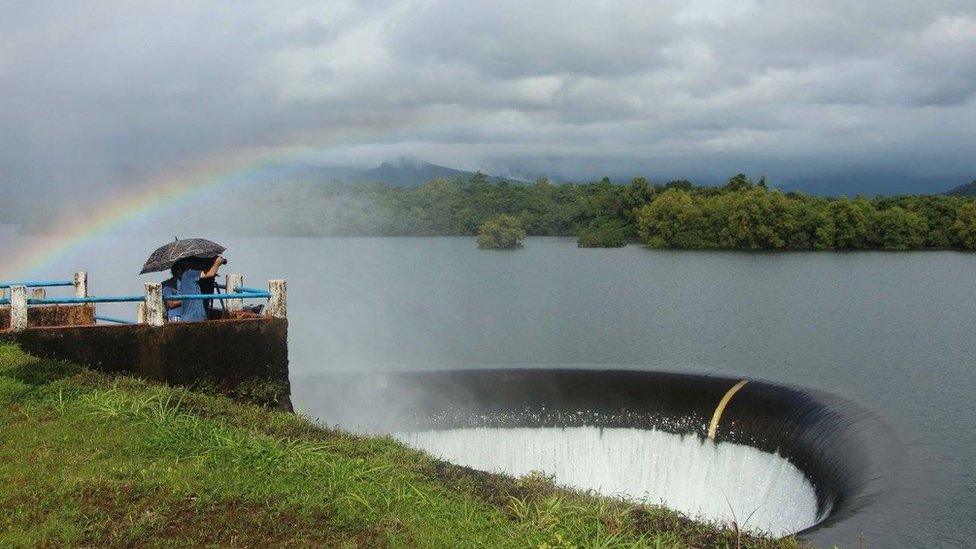
The state's first dam submerged the village of Curdi
A village in the western Indian state of Goa is only visible for one month in a year - for the remaining 11 months, it disappears under water. And when the water recedes, its original residents, now settled elsewhere, come together to celebrate their home, reports Supriya Vohra.
The village of Curdi was nestled between two hills in the Western Ghats with the Salaulim river - a tributary of one of the major rivers in Goa - running through it.
It was once a thriving village in south-eastern Goa.
In 1986, the village as its residents knew it ceased to exist. The state's first dam was constructed and, as a consequence, the village was completely submerged.
But every year in May, the water recedes to reveal what is left of it.
Cracked earth, stumps of trees, eroded remnants of houses and religious structures, broken remains of household items, water canals in ruins, and miles of barren ground criss-crossing with water bodies.
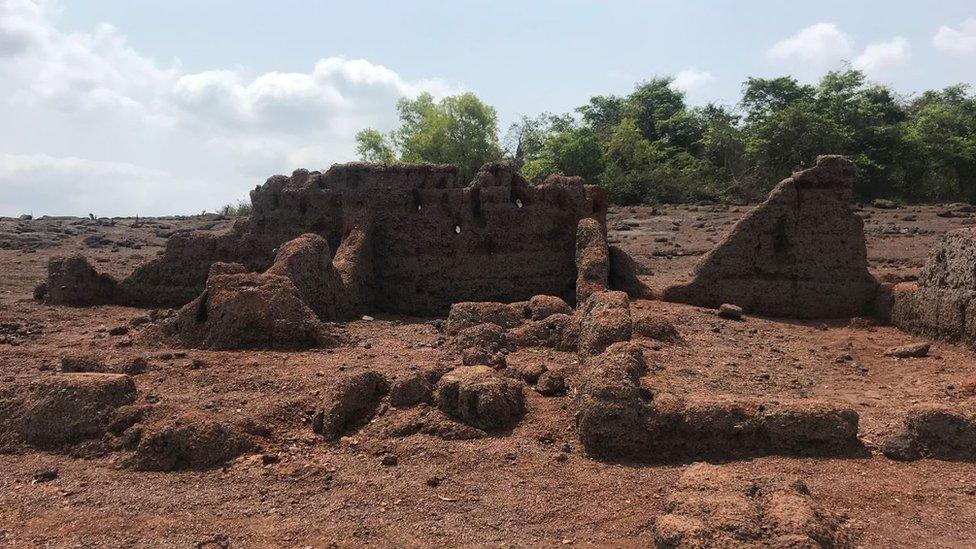
Located in the hinterland, Curdi was once a thriving village
The land used to be fertile and most of the village, whose population was around 3,000, lived off it - they tilled paddy fields surrounded by coconut, cashew, mango and jackfruit trees.
Hindus, Muslims and Christians lived together. There was a main temple, several smaller temples, a chapel and a Muslim shrine. It was also the birthplace of the renowned classical vocalist Mogubai Kurdikar.
But things drastically changed after 1961, when Goa became a part of India. The state was under Portuguese rule until then.
The first chief minister, Dayanand Bandodkar, visited the village with news about the construction of the state's first dam. He gathered all the residents and told them that it would benefit all of southern Goa.
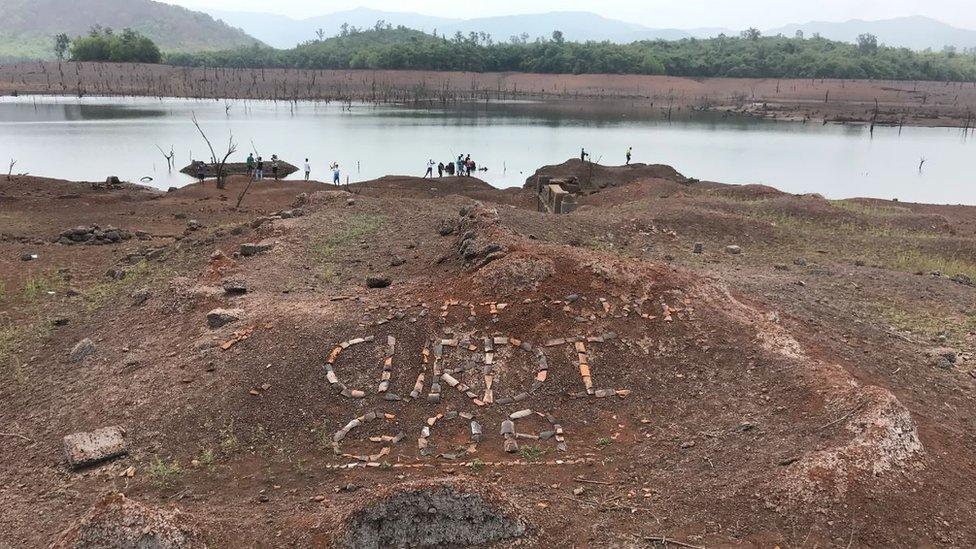
When the water recedes every year, remnants of the village are revealed
"He said it will drown our village, but our sacrifice will be for the greater good," 75-year-old Gajanan Kurdikar, who has vivid memories of the meeting, says.
Mr Kurdikar and other residents, comprising more than 600 families, were forced to relocate to nearby villages but were given land and compensation.
The project was ambitious. Built on the banks of the Salaulim river, it was called the Salaulim Irrigation Project. It proposed to provide water for drinking, irrigation and industrial purposes to most of southern Goa. And it was meant to provide some 400 million litres of water per day to citizens.
"When we came to the new village we had absolutely nothing," recalls Inacio Rodrigues. His was amongst the first few families to shift in 1982. They had to stay in makeshift homes until they could build their own home from scratch. For some that took almost five years.
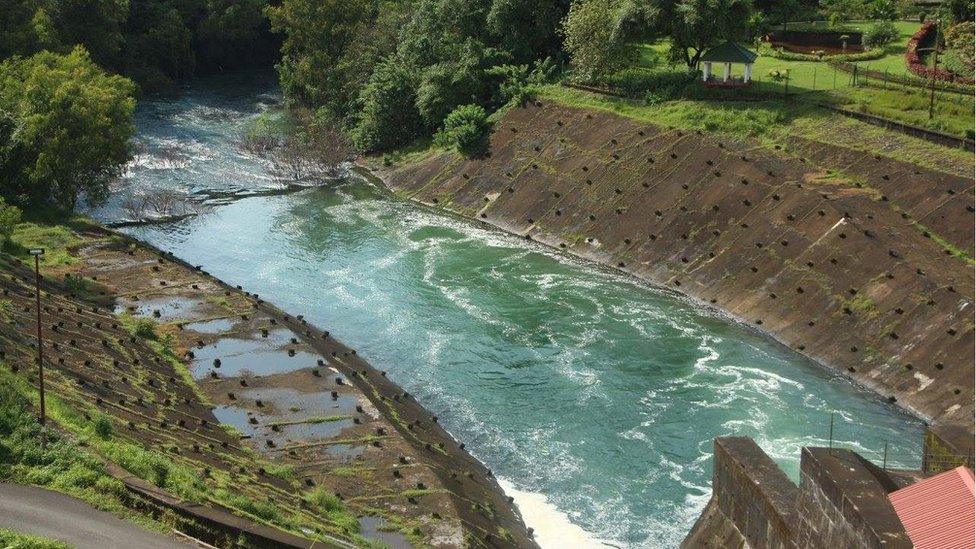
The state's first dam was planned to provide water for all of southern Goa
Gurucharan Kurdikar was 10 years old when his family moved to a new village in 1986.
"I faintly remember my parents hurriedly putting everything in a pick-up truck. I was also packed up in the truck, along with my brother and grandmother. My parents followed us on their moped," the 42 year-old recalls.
His mother, Mamta Kurdikar, remembers the day more clearly. "I think we were the last few families left. It rained heavily the night before, and the water from the fields started entering our house. We had to leave immediately. I couldn't even take my flour mill with me," she says.
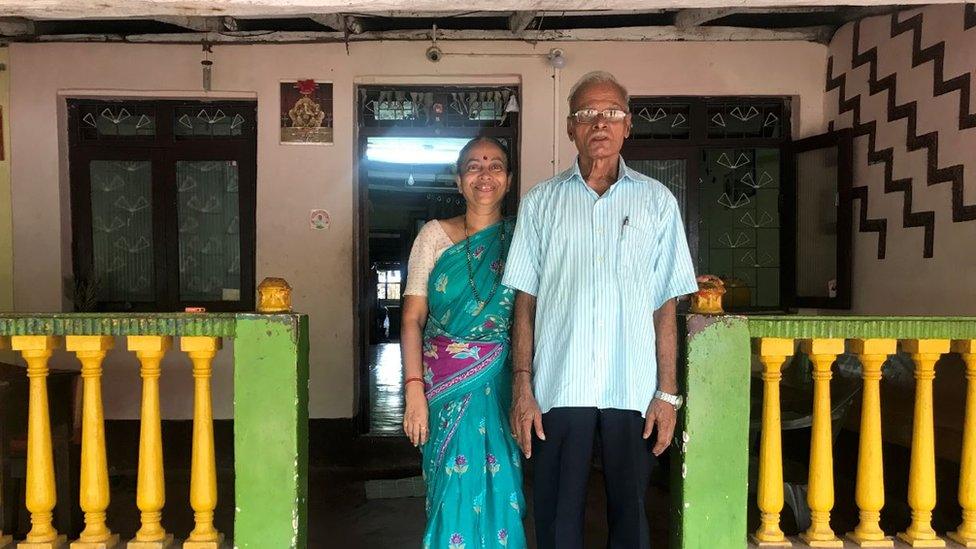
Gajanan and Mamta Kurdikar now live in Vaddem village
But the water from the dam never reached the villages where the former inhabitants of Curdi moved.
"The tap system did not come through to all villages of south Goa as promised," Gajanan Kurdikar says. "So we do not get our drinking water from the dam."
In Vaddem, where Mr Kurdikar now lives, there are two large wells. But in April and May, the wells begin to dry up. They're then forced to depend on government tankers for their drinking water.
When the water recedes in May, Curdi's original inhabitants visit their lost homeland.
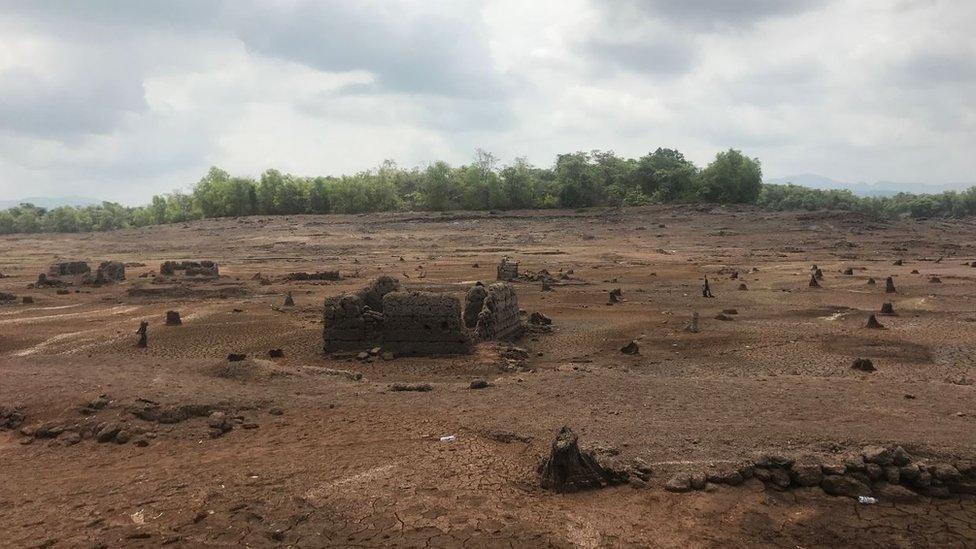
About 3,000 residents lived in Curdi before they were forced to relocate
The Christian community gather for an annual Chapel feast and the Hindus host a temple feast during that month.
"Today it's very easy for us to pack up our bags and move," says Venisha Fernandes, a Goa-based sociologist.
"But for the people of Curdi, their identity was based on their land. They were closely and directly connected with it. That is perhaps why they remember it keenly, and keep coming back to it."
Supriya Vohra is an independent journalist based in Goa.
- Published31 January 2019

- Published5 December 2016
